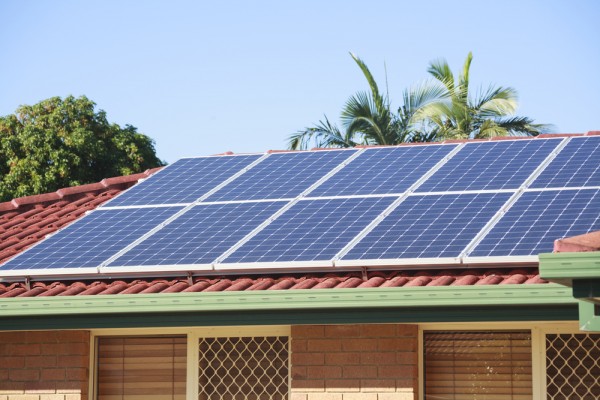LOS ANGELES (CNS) - The Los Angeles Department of Water and Power’s rooftop solar energy program has suffered delays, with only a small fraction of the projects generating energy since it began in 2012, according to a UCLA/USC report released today.
The Department of Water and Power’s “feed-in-tariff” program allows property owners to install solar panels on their buildings and sell the energy back to the utility.
But despite having already authorized 150 megawatts of solar projects, just 6.5 megawatts are currently being generated, according to the report commissioned by the Los Angeles Business Council Institute.
Another 8.2 megawatts are under contract and awaiting construction, and 56 megawatts are in the works, the report said.
The report also found the programs were delayed by limited staffing, with the number of the equivalent of three full-time workers in the program in 2013, even though there was originally a budget for 30.
UCLA and USC researchers recommended increasing staffing and processing applications for the program based on how ready the projects are, rather than on when they are submitted.
Researchers also said the city could see “exponentially greater benefits” by increasing the program’s capacity to 1,500 megawatts by 2025. This would result in 36,000 new jobs — enough energy to power more than 300,000 homes — and the elimination of 26 million metric tons of greenhouse gas emissions, the report said.
The heightened pace would also help the city stay on track to meet anticipated state mandated renewable energy goals, according to the report.
The report also found that LADWP’s existing program resulted in 2,000 new jobs, $300 million in direct investment and the displacement of 2.7 million tons of greenhouse gas emissions.
LADWP’s feed-in-tariff program was implemented following a push by the business council and the CLEAN LA Solar Coalition.
LADWP’s Solar Programs Manager Jason Rondou responded to the report today during a City Hall roundtable, saying the 150 megawatts was a goal that the LADWP did not expect to reach until the end of 2016.
The solar program now has 7 megawatts on board, but he acknowledged they had expected to have 20 megawatts operational at this time.
“We’ve seen areas where we can improve our process,” Rondou told City News Service following the talk, and the utility has worked toward “automating paper work, automating communications, being able to ramp staff easily.”
“But it’s also a lesson learned on the development community,” he said. “We need them to be more responsive as well.”
Rondou also pointed to delays in the permitting of projects by the city’s Department of Building and Safety.
Rondou added that the utility has added staffing, but said they mainly rely on a system of “ramping up,” or assigning existing workers to solar projects based on the need.
He said the utility is proposing another 300 megawatts of solar energy capacity for the feed-in-tariff program, which would require approval from city leaders.




No comments yet.